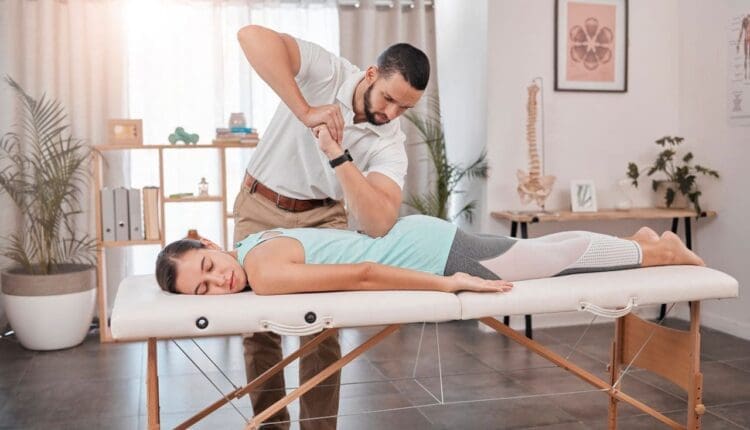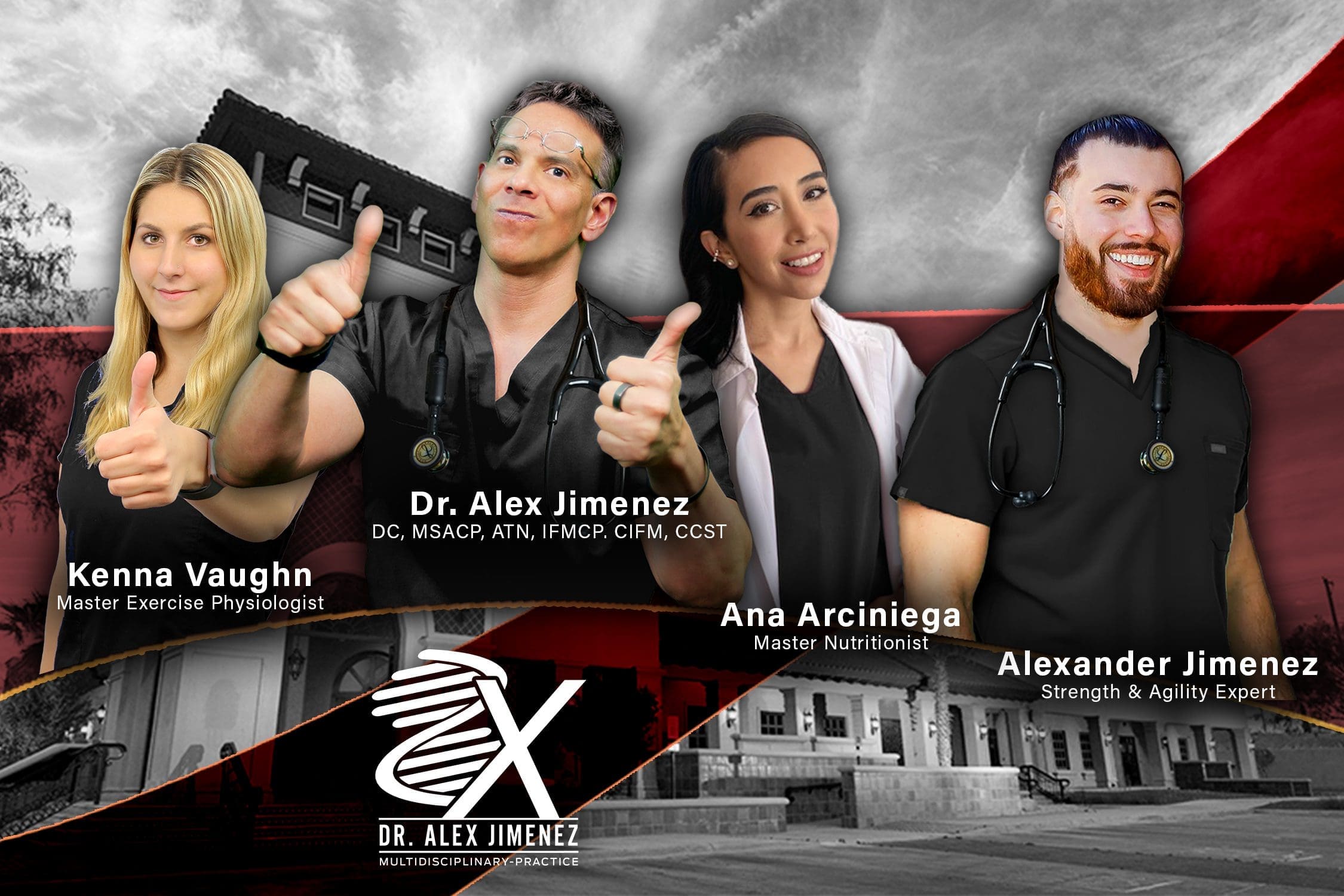Table of Contents
Constantly Contracting Gluteal Muscles: A Functional Medicine and Chiropractic Perspective

Introduction
The gluteal muscles are among the body’s most important stabilizers. They help with standing, walking, running, climbing stairs, and keeping balance. When these muscles remain contracted all the time—whether from poor posture, injury, overuse, or nerve irritation—they can become a source of chronic pain and dysfunction. The problem isn’t just local to the hips and pelvis. Overactive glutes can affect the lower back, hamstrings, knees, and even spinal alignment (Kirk Chiropractic, n.d.).
At Dr. Jimenez’s clinic in El Paso, this issue is approached from two complementary angles:
- Chiropractic care — addressing spinal and pelvic misalignments, nerve interference, and movement restrictions.
- Functional medicine — identifying systemic factors, nutritional deficiencies, and inflammation that may contribute to muscle dysfunction.
With his unique qualifications as a Doctor of Chiropractic (DC) and Advanced Practice Registered Nurse, Family Nurse Practitioner-Board Certified (APRN, FNP-BC), Dr. Jimenez combines manual therapy, diagnostic imaging, rehabilitative exercise, lab testing, and personalized nutrition to restore optimal muscle function.
(Myevolve Chiropractor, n.d.; Dr. Alexander Jimenez, n.d.)
Why Gluteal Muscles Stay Constantly Contracted
Several factors can lead to chronic glute tension:
- Pelvic or spinal misalignment — changing the way muscles fire and lengthen.
- Nerve irritation or compression — from lumbar or sacral spine dysfunction.
- Poor posture — prolonged sitting or standing in asymmetrical positions.
- Overuse — repetitive sports or work activities without adequate recovery.
- Compensation — when other stabilizing muscles are weak, forcing the glutes to overwork.
When gluteal muscles remain shortened and tight, circulation is reduced, waste products build up, and the nervous system begins to treat this contracted state as “normal.” This can create a feedback loop where the muscles stay on guard, leading to pain and movement problems.
In Dr. Jimenez’s clinical experience, this problem often appears in patients recovering from motor vehicle accidents, workplace injuries, and sports trauma. The body tries to protect injured areas by locking certain muscles, but if this pattern is not corrected, it becomes ingrained in the nervous system.
(Kirk Chiropractic, n.d.; Cruz Chiro Wellness, n.d.)
How Pelvic and Spinal Misalignment Contribute
The pelvis and spine work as a unit. If one is misaligned, the other will be affected. For example:
- Anterior pelvic tilt can overstretch the hamstrings while keeping the glutes shortened.
- Rotated pelvic bones can cause uneven glute activation, forcing one side to contract more.
Chiropractic adjustments restore symmetrical movement between the spine and pelvis. This reduces uneven muscle tension and allows the nervous system to send more accurate activation signals.
Dr. Jimenez uses advanced imaging tools, including X-ray, MRI, and dynamic motion studies, to pinpoint misalignments. He then combines structural correction with exercise therapy to ensure the changes are reinforced in daily movement.
(Grant Chiropractic, n.d.; Dr. Alexander Jimenez, n.d.)
Nervous System Retraining
Muscles contract because the nervous system tells them to. After injury or prolonged strain, nerve pathways may remain in a “high-alert” state, causing ongoing muscle contraction—known as neuromuscular guarding.
To break this cycle, Dr. Jimenez integrates:
- Chiropractic adjustments to improve joint mobility and nerve flow.
- Proprioceptive exercises to retrain how the body senses position and movement.
- Manual therapy to release trigger points and adhesions.
This combination helps “reset” muscle firing patterns so that glutes contract only when needed, not continuously.
(Chiropractic Health, n.d.; Prime Sports Med, n.d.)
Chiropractic Adjustments and Advanced Therapies
At the core of care for overactive glutes are precise spinal and pelvic adjustments. These:
- Reduce nerve irritation
- Correct alignment
- Improve range of motion
Advanced chiropractic tools like spinal decompression tables and flexion-distraction techniques can help when nerve compression contributes to the problem.
For athletes or accident patients, adjustments are combined with soft-tissue therapies to ensure muscles adapt to the new joint positions.
(Myevolve Chiropractor, n.d.; Trident Health Chiropractic, n.d.)
Targeted Exercise and Stretching
Retraining overactive glutes requires balancing strength and flexibility:
- Stretches: Pigeon pose, figure-four, and standing hip flexor stretch.
- Strengthening: Bridges, clamshells, and resisted hip abductions with correct form.
- Core training: Planks and bird dogs to stabilize the pelvis.
Dr. Jimenez tailors exercise programs based on diagnostic findings, ensuring the right muscles are activated and the overactive ones are given time to recover.
(Prime Sports Med, n.d.; Cruz Chiro Wellness, n.d.)
Massage Therapy and Myofascial Release
Massage therapy helps release chronic glute tension by:
- Increasing blood flow
- Reducing adhesions in connective tissue
- Calming the nervous system
Myofascial release and instrument-assisted soft tissue mobilization (IASTM), such as Graston or Gua Sha, are frequently used at Dr. Jimenez’s clinic to target deeper tissue restrictions. When performed before chiropractic adjustments, they help the body accept and maintain alignment changes.
(Prime Sports Med, n.d.)
Acupuncture and Neuromodulation
Acupuncture is an effective adjunct for stubborn glute tension. It works by:
- Reducing local muscle spasm
- Promoting circulation
- Modulating pain pathways in the brain and spinal cord
Dr. Jimenez often integrates acupuncture when standard manual therapies have not fully resolved the issue, especially in patients with chronic pain syndromes.
(Prime Sports Med, n.d.)
Functional Medicine Lab Testing
Because muscle health is influenced by more than just structure and movement, Dr. Jimenez uses functional medicine lab testing to look for:
- Inflammatory markers (CRP, ESR)
- Micronutrient levels (magnesium, vitamin D, B-complex)
- Hormone balance (thyroid, cortisol, testosterone/estrogen)
- Metabolic markers (blood sugar regulation, mitochondrial function)
These insights help identify underlying systemic factors that may keep muscles in a contracted state, such as chronic inflammation, nutrient deficiencies, or hormonal imbalances.
Nutritional Strategies for Muscle Recovery
Nutrition supports muscle function and nerve health. Dr. Jimenez’s plans may include:
- Anti-inflammatory diet — rich in vegetables, omega-3s, and antioxidants.
- Magnesium-rich foods — leafy greens, nuts, seeds, to help muscles relax.
- Adequate protein — for muscle repair and recovery.
- Hydration — to maintain electrolyte balance and prevent cramping.
Patients may also be advised on targeted supplementation based on lab results.
Integrative Care Model
Dr. Jimenez’s clinic blends chiropractic care with:
- Functional medicine
- Physical rehabilitation
- Soft-tissue therapy
- Acupuncture
- Nutrition and lifestyle coaching
This whole-person approach addresses both the local problem (glute contraction) and the systemic contributors, creating a long-term solution.
(Myevolve Chiropractor, n.d.; Dr. Alexander Jimenez, n.d.)
Prevention and Long-Term Wellness
To prevent recurrence, Dr. Jimenez emphasizes:
- Regular movement breaks for desk workers
- Postural awareness training
- Strengthening complementary muscle groups
- Maintaining healthy weight and fitness levels
- Ongoing nutritional support
Education is a cornerstone of care, empowering patients to maintain their results.
Conclusion
Constantly contracting the gluteal muscles is a sign of deeper imbalances in the body. Through a combination of chiropractic adjustments, functional medicine diagnostics, targeted rehabilitation, and nutritional strategies, Dr. Alexander Jimenez helps patients restore muscle balance, improve movement, and enhance overall health.
This integrative approach not only relieves current symptoms but also builds a foundation for lasting wellness.
References
- Chiropractic Health. (n.d.). A muscle problem is not always a problem with the muscle.
- Cruz Chiro Wellness. (n.d.). Tight glute muscles and low back pain.
- Grant Chiropractic. (n.d.). How hip misalignment affects your body.
- Kirk Chiropractic. (n.d.). Hip and buttock (gluteus medius/minimus) syndrome.
- Myevolve Chiropractor. (n.d.). What role does a chiropractor play in reducing muscle tension?
- Prime Sports Med. (n.d.). Muscle tightness.
- Trident Health Chiropractic. (n.d.). The science behind chiropractic care and muscle recovery.
- Dr. Alexander Jimenez. (n.d.). Clinical observations and integrative care expertise.
Post Disclaimer
Professional Scope of Practice *
The information on this blog site is not intended to replace a one-on-one relationship with a qualified healthcare professional or licensed physician and is not medical advice. We encourage you to make healthcare decisions based on your research and partnership with a qualified healthcare professional.
Blog Information & Scope Discussions
Welcome to El Paso's Premier Wellness and Injury Care Clinic & Wellness Blog, where Dr. Alex Jimenez, DC, FNP-C, a board-certified Family Practice Nurse Practitioner (FNP-BC) and Chiropractor (DC), presents insights on how our team is dedicated to holistic healing and personalized care. Our practice aligns with evidence-based treatment protocols inspired by integrative medicine principles, similar to those found on this site and our family practice-based chiromed.com site, focusing on restoring health naturally for patients of all ages.
Our areas of chiropractic practice include Wellness & Nutrition, Chronic Pain, Personal Injury, Auto Accident Care, Work Injuries, Back Injury, Low Back Pain, Neck Pain, Migraine Headaches, Sports Injuries, Severe Sciatica, Scoliosis, Complex Herniated Discs, Fibromyalgia, Chronic Pain, Complex Injuries, Stress Management, Functional Medicine Treatments, and in-scope care protocols.
Our information scope is limited to chiropractic, musculoskeletal, physical medicine, wellness, contributing etiological viscerosomatic disturbances within clinical presentations, associated somato-visceral reflex clinical dynamics, subluxation complexes, sensitive health issues, and functional medicine articles, topics, and discussions.
We provide and present clinical collaboration with specialists from various disciplines. Each specialist is governed by their professional scope of practice and their jurisdiction of licensure. We use functional health & wellness protocols to treat and support care for the injuries or disorders of the musculoskeletal system.
Our videos, posts, topics, subjects, and insights cover clinical matters and issues that relate to and directly or indirectly support our clinical scope of practice.*
Our office has made a reasonable effort to provide supportive citations and has identified relevant research studies that support our posts. We provide copies of supporting research studies available to regulatory boards and the public upon request.
We understand that we cover matters that require an additional explanation of how they may assist in a particular care plan or treatment protocol; therefore, to discuss the subject matter above further, please feel free to ask Dr. Alex Jimenez, DC, APRN, FNP-BC, or contact us at 915-850-0900.
We are here to help you and your family.
Blessings
Dr. Alex Jimenez DC, MSACP, APRN, FNP-BC*, CCST, IFMCP, CFMP, ATN
email: coach@elpasofunctionalmedicine.com
Licensed as a Doctor of Chiropractic (DC) in Texas & New Mexico*
Texas DC License # TX5807
New Mexico DC License # NM-DC2182
Licensed as a Registered Nurse (RN*) in Texas & Multistate
Texas RN License # 1191402
ANCC FNP-BC: Board Certified Nurse Practitioner*
Compact Status: Multi-State License: Authorized to Practice in 40 States*
Graduate with Honors: ICHS: MSN-FNP (Family Nurse Practitioner Program)
Degree Granted. Master's in Family Practice MSN Diploma (Cum Laude)
Dr. Alex Jimenez, DC, APRN, FNP-BC*, CFMP, IFMCP, ATN, CCST
My Digital Business Card


